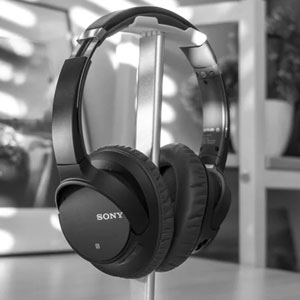Medical & Surgical Services
As a consultant urologist, I treat a wide range of conditions and perform various surgical procedures — all tailored to individual needs and offered across multiple hospitals.
Kidney & Ureteric Stones
A common but painful condition where treatment depends on the stone’s size, location, number, and the symptoms it causes.
Kidneys & Stones
What are the kidneys & ureters?
The kidneys are two bean-shaped organs that filter waste and excess fluid from the blood to form urine. The ureters are narrow tubes that carry urine from each kidney to the bladder for storage and eventual elimination.
What are stones & why do they form?
Kidney stones are hard deposits of minerals (like calcium, oxalate, or uric acid) that form in the kidneys. If they travel down into the ureter, they can block urine flow and cause pain. Contributing factors include:
Dehydration
High-oxalate diet
Metabolic abnormalities
Family history
What are the symptoms?
Sudden, severe flank or abdominal pain
Nausea and vomiting
Blood in the urine
Pain while urinating
Increased urgency or frequency of urination
Fever and chills (if infection is present)
How are they diagnosed?
Ultrasound: Useful for detecting kidney stones and hydronephrosis.
Non-contrast CT Scan: Gold standard for diagnosing stone size and location.
X-ray KUB (Kidneys-Ureters-Bladder): Can help track radiopaque stones.
Urine & Blood Tests: To assess infection, kidney function, and metabolic causes.
Can I prevent them from occurring?
Drink 2.5–3 litres of fluid per day (unless advised limitation).
Limit salt, oxalate-rich foods (like spinach, nuts), and animal protein.
Maintain a healthy weight.
Monitor calcium intake — do not eliminate it entirely.
Depending on stone type, medications may be prescribed to prevent recurrence.
Treatment Options Offered
Depending on the stone size, symptoms, and location, options include:
Medical Management
Watchful Waiting
Small stones may pass on their own with hydration and pain control.
Medical Expulsion Therapy
Use of certain medications i.e. alpha-blockers like tamsulosin to help stones pass more easily.
Surgical Procedures
ESWL (Extracorporeal Shockwave Lithotripsy)
Non-invasive technique using shockwaves to break stones into fragments that pass naturally.
URS (Ureteroscopy)
A small scope is inserted through the urethra into the ureter where the stones are fragmented & removed.
RIRS (Retrograde Intrarenal Surgery)
A flexible ureteroscope is used to access and treat stones in the kidney through the ureter. Laser is used to fragment the stones.
PCNL (Percutaneous Nephrolithotomy)
A small incision is made in the back to access and remove large or complex stones directly from the kidney using a nephroscope.
Laparoscopic or Open Pyelolithotomy
In certain selective cases, a laparoscopic or open surgical approach may be offered. This is after careful consideration, if it is the safest and most effective available option.
Which option do YOU need?
The decision is based on:
Stone size and location
Symptoms and pain severity
Presence of infection or kidney obstruction
Patient health status and preference
We take the time to explain all your options and recommend the most effective and least invasive solution.
DJ stents
What is a DJ stent?
A DJ stent (Double J stent) is a thin, flexible tube placed inside the ureter to keep it open and allow urine to flow from the kidney to the bladder. It has curled ends to prevent it from moving out of place.
Does it have to be removed?
Yes, a DJ stent usually needs to be removed once its purpose is served, typically within a few weeks to a few months. Leaving it in for too long can lead to discomfort, infection, or stone formation.
Is it like a cardiac stent?
No, a DJ stent is different from a cardiac stent. A cardiac stent is a metal mesh used to keep blood vessels open in the heart, while a DJ stent is a soft, flexible tube placed temporarily in the ureter to ensure urine flow from the kidney to the bladder.
When is it used?
It is used when the ureter is blocked or at risk of blockage, such as due to kidney stones, swelling, strictures, or after certain urological surgeries. It helps maintain urine flow and prevents kidney damage while the underlying issue is treated or healing occurs.
Prostate Health
Enlarged or Cancer? Age related ‘normal’ changes?
A tiny organ that can cause havoc if ignored!
What is the prostate?
The prostate is a small, walnut-sized gland in men, located just below the bladder. It plays a crucial role in male reproductive health by producing fluid that nourishes and transports sperm. As men age, the prostate can undergo changes that may lead to urinary symptoms or serious conditions like cancer.
Common Prostate Conditions
Benign Prostatic Hyperplasia (BPH)
Non-cancerous enlargement of the prostate, common in men over 50. It can press against the urethra and affect urination.
Prostatitis
Inflammation of the prostate, which may be caused by infection. It can be acute (sudden onset) or chronic (long-lasting), and may lead to pelvic pain, discomfort, and urinary issues.
Prostate Cancer
A malignant tumour of the prostate gland. It’s one of the most common cancers in men and often grows slowly, though aggressive forms can also occur.
Symptoms to Watch For
Difficulty starting or stopping urination
Weak or interrupted urine stream
Frequent urination, especially at night (nocturia)
Pain or burning during urination
Blood in urine or semen
Pelvic discomfort or pain
Painful ejaculation
Investigations Adviced
Digital Rectal Examination (DRE)
Serum PSA Testing
Transrectal Ultrasound (TRUS)
Prostate Biopsy
MRI of the Prostate
Uroflowmetry and Post-Void Residual (PVR) testing
Treatment Options Offered
Medical Management
Certain drugs such as alpha-blockers (eg. Silodosin and Tamsulosin) 5-alpha reductase inhibitors (eg. Dutasteride) alongwith lifestyle changes.
Transurethral Resection of Prostate (T.U.R.P.)
TURP is a minimally invasive surgery used to treat urinary symptoms caused by an enlarged prostate (BPH).
It involves removing excess prostate tissue through the urethra using a resectoscope.
This gold-standard procedure offers significant symptom relief and quicker recovery than open surgery
Open Surgery
Open prostate surgery is typically performed for very large prostates, when all other treatments have failed or for certain cases of prostate malignancy.
It involves removing the obstructing prostate tissue through an abdominal incision (simple prostatectomy).
Though more invasive than TURP, it provides effective and lasting relief for severe cases of BPH.
What about P.S.A.?
PSA is a protein made by both normal and abnormal prostate cells, measurable in blood.
It is commonly used as a screening and monitoring tool for prostate conditions, including cancer.
Elevated PSA levels may suggest BPH, prostatitis, or prostate cancer but are not diagnostic by themselves.
Levels can vary with age, prostate size, infection, recent ejaculation, or urinary procedures.
Further evaluation may include repeat PSA tests, imaging, or a prostate biopsy if levels remain high.
Prostate Cancer Screening
Prostate cancer screening typically involves a PSA blood test and a digital rectal examination (DRE).
Screening is recommended for men above 50 years, or above 45 if they have a family history or are at higher risk.
Early detection through screening can catch prostate cancer before symptoms develop, improving treatment outcomes.
Not all elevated PSA levels mean cancer — further testing may be needed to avoid unnecessary biopsies or treatments.
Screening decisions are individualized based on age, risk factors and patient preference after discussion with a urologist.
Bladder Health & Urinary Concerns
Nullam accumsan ipsum sit amet ante?
Vestibulum egestas consequat mauris?
Congue ligula ornare commodo mi?
Suspen disse facilisis fringilla lacinia?
Male Infertility & Andrology
Nullam accumsan ipsum sit amet ante?
Vestibulum egestas consequat mauris?
Congue ligula ornare commodo mi?
Suspen disse facilisis fringilla lacinia?
Reconstructive Urology
Nullam accumsan ipsum sit amet ante?
Vestibulum egestas consequat mauris?
Congue ligula ornare commodo mi?
Nam aliquam massa vitae auctor commodo. Aliquam nec velit et diam consectetur ultricies vel imperdiet purus. Morbi mollis eu lorem eu euismod. Integer facilisis sapien.
Suspen disse facilisis fringilla lacinia?
Female Urology
Nullam accumsan ipsum sit amet ante?
Vestibulum egestas consequat mauris?
Congue ligula ornare commodo mi?
Suspen disse facilisis fringilla lacinia?
Uro-oncology
Nullam accumsan ipsum sit amet ante?
Vestibulum egestas consequat mauris?
Congue ligula ornare commodo mi?
Nam aliquam massa vitae auctor commodo. Aliquam nec velit et diam consectetur ultricies vel imperdiet purus. Morbi mollis eu lorem eu euismod. Integer facilisis sapien.
Suspen disse facilisis fringilla lacinia?
Minimally Invasive Surgery
Nullam accumsan ipsum sit amet ante?
Vestibulum egestas consequat mauris?
Congue ligula ornare commodo mi?
Suspen disse facilisis fringilla lacinia?
Minor Procedures & Daycare Urology
Nullam accumsan ipsum sit amet ante?
Vestibulum egestas consequat mauris?
Congue ligula ornare commodo mi?
Nam aliquam massa vitae auctor commodo. Aliquam nec velit et diam consectetur ultricies vel imperdiet purus. Morbi mollis eu lorem eu euismod. Integer facilisis sapien.







